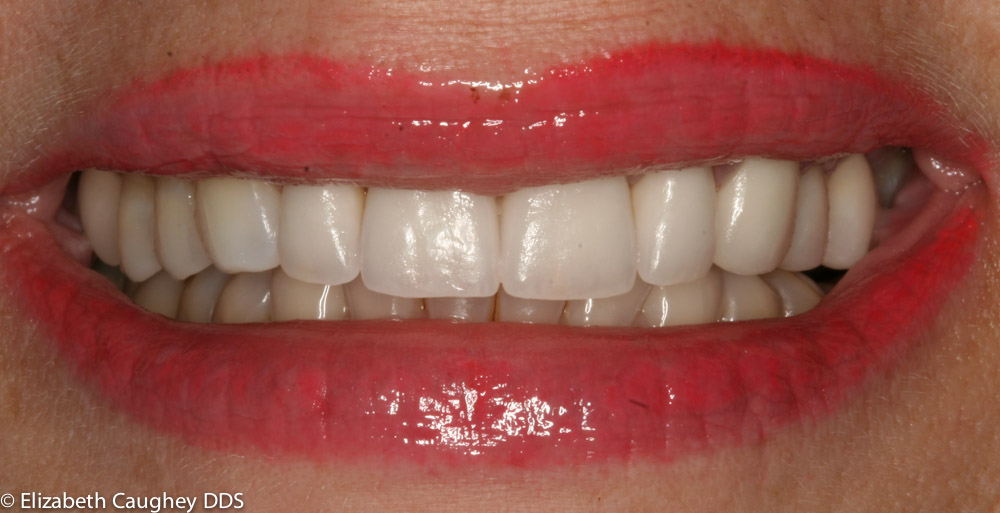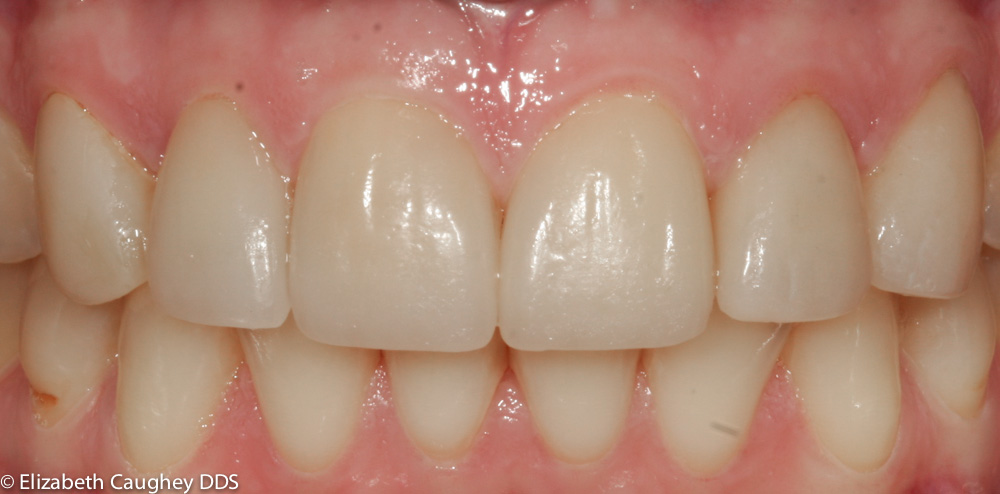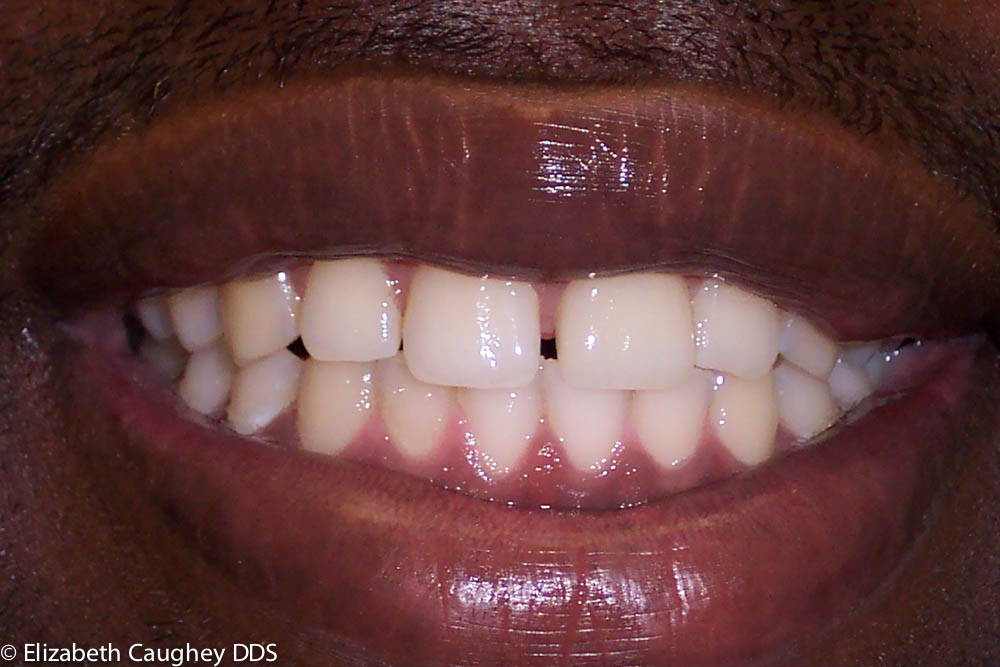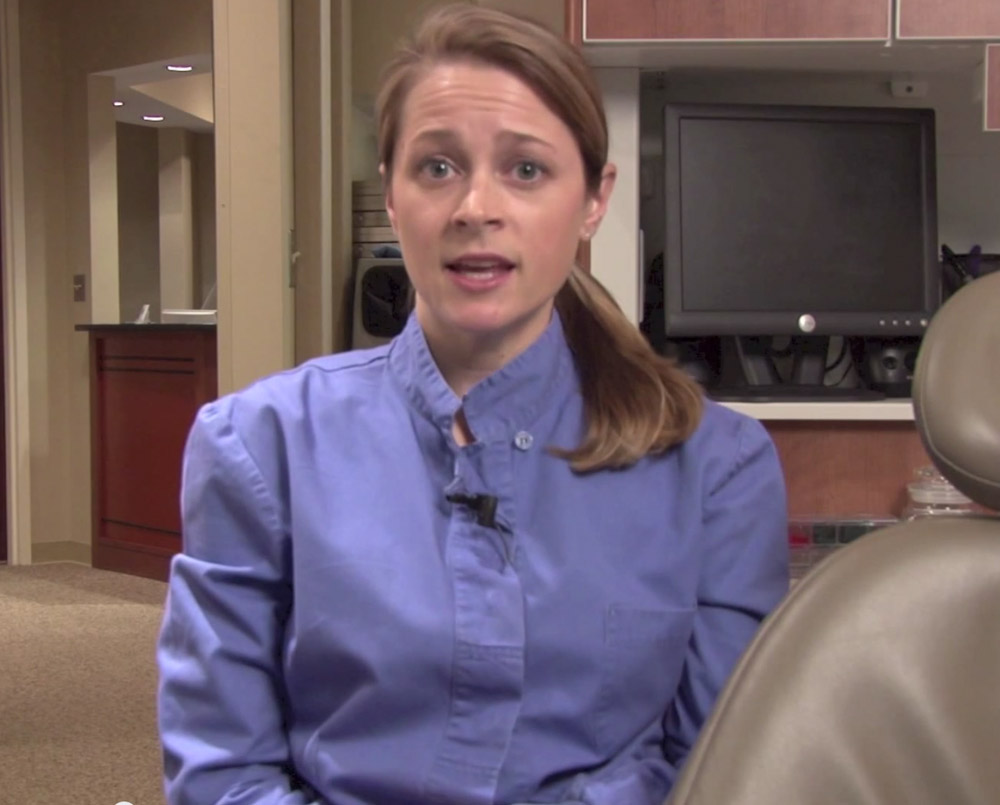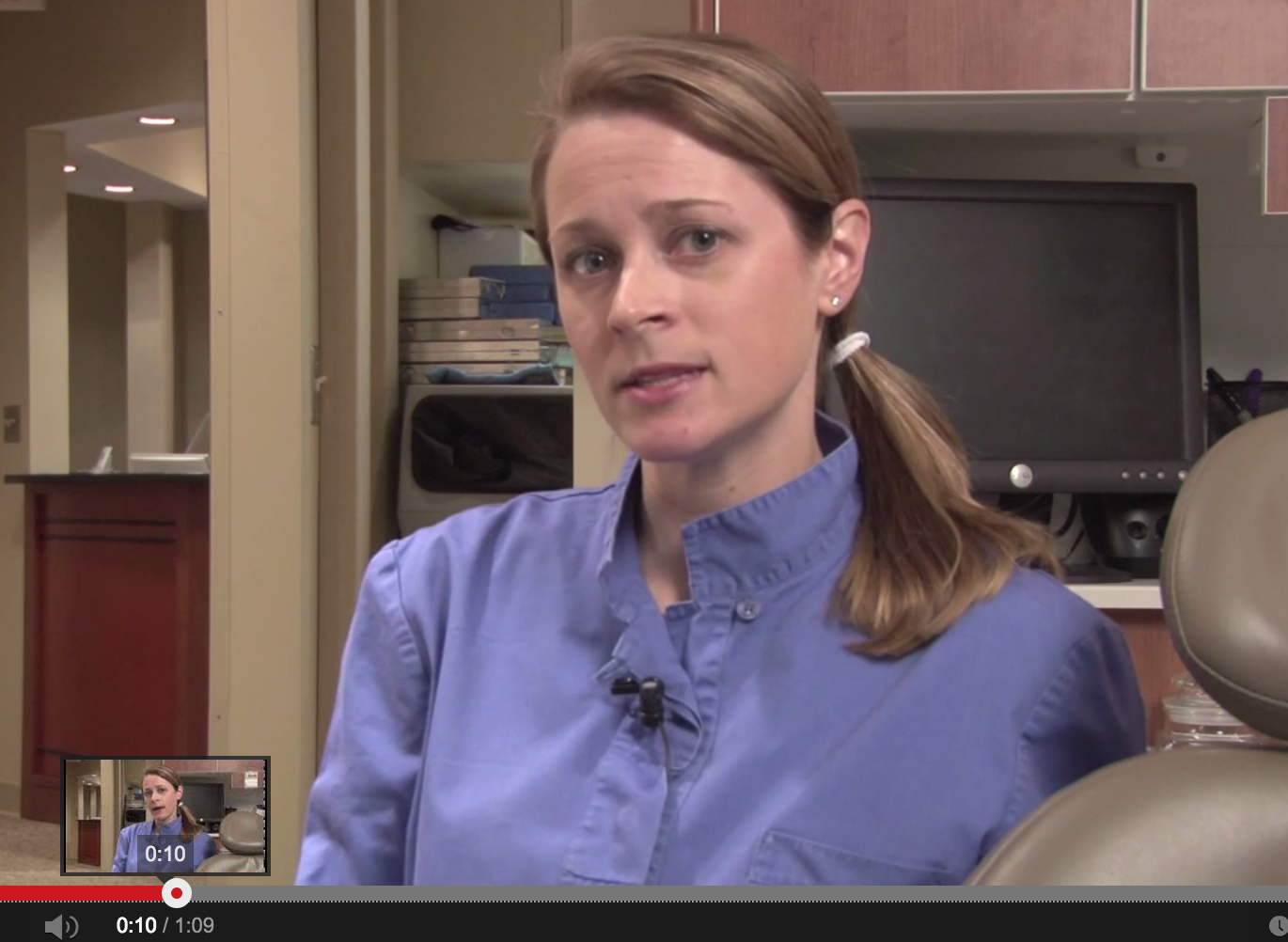This patient had experienced acid reflux, leading to a very thin tooth enamel that contributed to a grey-brown hue. Whitening had not solved her aesthetic need, as there simply was not enough thickness of enamel to whiten. Furthermore, the thinness of the enamel had weakened the structure of the tooth, and began causing tiny micro-cracks…
Read MoreThis patient had developed decalcified and dark stains on her front teeth after wearing braces as a teenager. The stains did not respond to bleaching or cleaning, as they were deep into the enamel. Our preparation of the teeth was conservative, removing only enough enamel to remove the stains and make room for a thin…
Read MoreThis patient worked in technology and was contemplating a transition to management in his field, but he felt that his smile might prevent him from interviewing well for a position that he was otherwise well-qualified for. He had requested replacement of an existing gold-frame crown with a more natural looking restoration. The contour of the…
Read MoreWhat keeps you from smiling? Would you like to improve your smile? Call now for an appointment! 770-393-9201 Contact Us Now! A smile represents a variety of feelings from subtle dry humor to unbridled enthusiasm and joy. What our smile says about us depends on how freely we use it. But for many people,…
Read MoreIn this brief video, here an explanation of how a bite splint can be used therapeutically. Whether someone has had a recent trauma like whiplash, or a chronic condition like arthritis, a dental bite splint between the teeth can support and stabilize both the jaw joints and the neck.
Read MoreWhat is the JVA? The JVA or Joint Vibration Analysis machine is a small set of headphones which we place in front of the patient’s ears. But instead of the patient listening to music, this small sensor will pick up vibrations inside the patient’s jaw joint. Healthy jaw joints make very little friction as you…
Read MoreAn analysis of the way a patient’s bite comes together can be initiated by our dental assistant using the T-scan. Here she demonstrates how the impact is registered on the sensor, then places the sensor in the patient’s mouth and takes a quick multi-bite series. Dr. Caughey interprets the data to the patient, demonstrating the…
Read More
